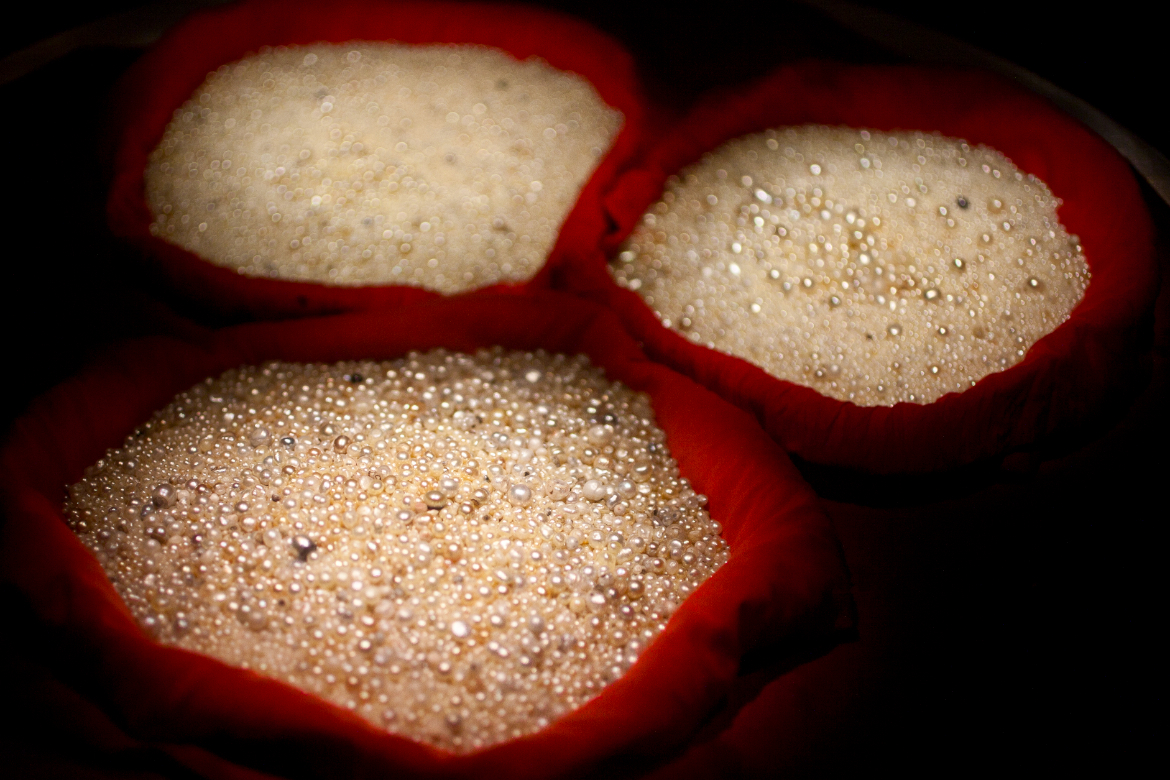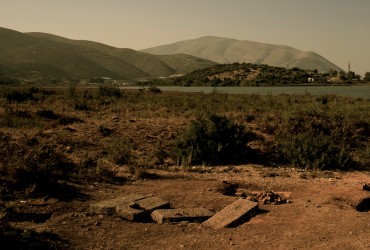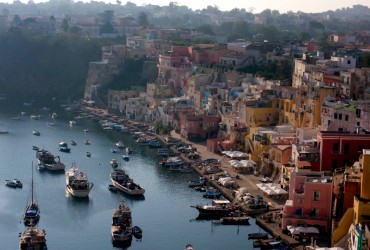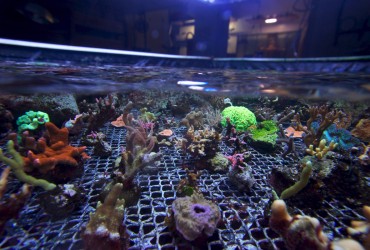Diving amongst the depths of the Persian Gulf
The water is greenish, filled with plankton, and the visibility doesn’t exceed five meters. Our air bubbles are flying away horizontally: a strong current is dragging us along a steep rock wall spiked with blueberry sea fans that are vibrating among the swirling fish. At 25 meters deep, we reposition ourselves in front of a cave entry were we can take a short break from the strong counter current. Just above of our heads, two eagles rays briefly mask the green sun and suddenly, jammed in the rock wall, I can see it: a giant oyster with a razor sharp shell, it is slightly opened and reveals parts of it’s bright orange flesh. A pearl oyster, a Pinctada margaritifera of nearly twenty centimetres large!
For a couple of days, I have been diving in the waters of the Musandam Archipelago, extreme north of the Oman sultanate. The region is arid and the fjords roughly carve the shore. Rocks and breathtakingly steep cliffs end up in the Persian Gulf. This territory belongs to the pearl fishermen. How can you not identify yourself with these centuries old divers, risking their lives bringing back these treasures from the depths of these waters?
A local legend tells us “When the pure light of the harvest moon shines through the seas, the oysters gather the surface and, caressed by the waves, open their shells to capture a drop of the silver night. Thus pearls are born…”
But the daily struggle of the divers wasn’t as poetic. 80 men including many slaves were piled up on wooden “sambouks” and dived at more than 30 meters deep up to 60 times a day. Campaigns went on for 120 days at sea, work shifts lasted 12 to 16 hours a day under the burning sun with the lack of personal space making things worse.
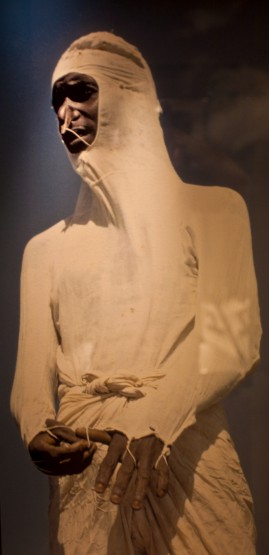
A cotton suit that was supposed to protect them from jellyfish stings composed their equipment, as well as a wooden or bone crafted nose clip, bee wax earplugs and small leather thimbles to protect their fingers from the sharp shells. The lucky ones had turtle scale goggles as a mask.
With the help of a huge rock to accelerate their descent, the divers stayed between one minute and one minute and a half underwater, just the time to grab between eight and ten oysters per dive. When they started to lack oxygen, they were quickly reeled up to the surface by a rope maneuvered by an Al Saib (hauler).
This gruelling task exposed the divers to jellyfishes, sharks and venomous rays. The number of incidents was very high. With the constant fear of the “sanna”, the divers would sometimes blackout when they reached the surface after being under water for too long…
After two hours of sailing, we reach the northern tip of Musandam, facing Iran, were the menacing currents of the Ormuz’s straight rolled up together. A notorious place for shipwrecks.
Under the water, we scoot over the fields of pink Alcyonarias, through the chaotic piles of black rocks covered with orange fluorescent sponges. The jade green water feels thick, pulsing, alive, and embraces us in a precious mobile cocoon, where the visibility is restrained to only a couple of meters. Suddenly, out of the gloom, we come across wooden frameworks and finally… a hull! We are standing in front of the“dhow’s” shipwreck, laying at thirty meters deep on a slope of rippled sand. Could it be Sinbad’s ship? It could also be a sambouk overloaded with pearls, which would have sunken during its way back. We inspect the hold of the ship, between the cables and the debris but the only pearls that we can spot are the ones peeking out of our pressure regulating valves. What is certain however, is that we are at the heart of the pearl oyster fields of the Persian Gulf, the oldest known to man, the ones that made the sultans very rich.
Under the watchful eye of a fishing eagle standing on his rock, we conclude this thrilling dive session with the company of Chris Chellapermal who brought us here thanks to the logistic of his foundation, the Nomad Ocean Adventures, and with Victor Cassé, who is going to become my guide throughout the Emirates, during this historical quest for the pearls of the black gold country.
On our way to Dubaï, while we are travelling through the dunes of Sharjah, Victor is very loquacious. After he studied at “Sciences Po”, a Master’s degree in history and an international relationship’s expertise, he established himself in Dubaï as a guide. He knows really well the local history of pearls. I am not finished being surprised…
